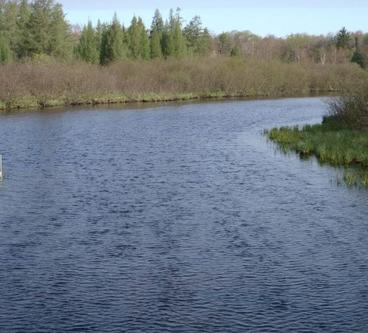
Groundwater discharge is an important determinant of habitat conditions for economically and culturally important cold-water fish in the Midwest.
Challenge: Warming water temperatures are impacting where coldwater fish spawn.
Principal Investigator(s):
- Chanse Ford (USGS Upper Midwest Water Science Center)
Co-Investigator(s):
- Brent P Heerspink (Upper Midwest Water Science Center)
Cooperator/Partner(s):
- Howard W Reeves (Upper Midwest Water Science Center)
- Anthony Kendall (Michigan State University)
- Paul Doss (University of Southern Indiana)
- Daniel Hayes (Michigan State University)
Cold-water fish species such as trout and salmon are highly valued components of many stream ecosystems in Michigan and the Great Lakes region and are sensitive to rising stream temperatures. For example, the timing of spawning and development rates of these species are affected by stream temperature from late fall through spring. Historically, stream temperature modeling has focused on air temperature and solar radiation as the main drivers of stream temperature, while streams that are fed by groundwater are often viewed as being less affected by climate warming. However, as the climate continues to warm, groundwater temperatures could also rise, thereby contributing to warming stream temperatures and reducing sufficient cold-water habitats available for fish. This situation is exacerbated by the loss of snow cover in winter, another important input to streamflow.
The importance of groundwater in maintaining stream temperature during winter and early spring, when inputs from precipitation are trapped in snow, is a particular knowledge gap. This project will model historical and future surface and groundwater temperatures within the groundwater-driven White River watershed in Manistee National Forest, Michigan. The model will consider year-round temperature behavior to provide information to managers on summer and winter periods.
Anticipating and understanding future warming of groundwater and surface water resources in cold-water fish habitats is critical for the development of effective management strategies. Managers with the U.S. Forest Service and Michigan Department of Natural resources can use this information to determine when and where to stock certain fish species, where to focus habitat development efforts, and how best to manage the stream adjacent landscape, leading to improved ecosystem and economic outcomes for the region.
Read more from the CASC Project Explorer.
